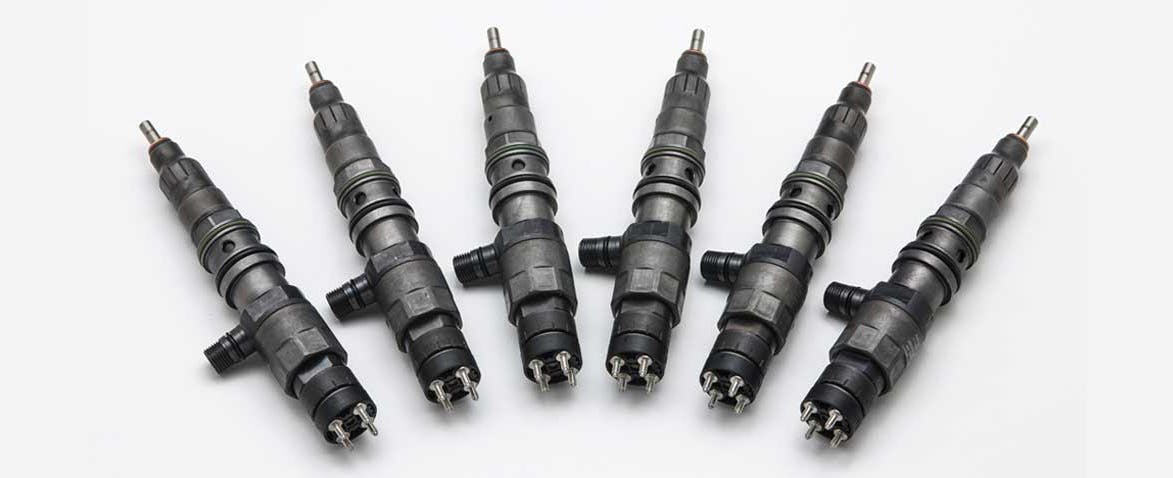The science and importance of fuel injectors

Fuel Injectors: The Science and Importance
In People’s Daily lives,a majority of the human population commute to work, either by public transportation or driving vehicles, be it a car, van or bike. If you’re not living in a city, chances are you’d have to get around on foot or by car to get to where you want to go. Chances are, it’s a lot easier to get a car than any other mode of personal transportation, which is why it’s important to learn a little bit about cars, how they work, certain components that may provide useful for everyday use, as well as how to maintain a car.Of course, for a car to work properly, it must have the assistance of fuel injectors
This article is about fuel injectors – their history, the different types of injectors and how to select one for the type of vehicle you have. Fuel injectors form a very important component in modern vehicles. Identifying your fuel injector in your engine system and knowing how to check and get a replacement are all part of the maintenance of an optimal vehicle.

What’s a fuel injector?
As the name suggests, a fuel injector does the job of injecting fuel into your vehicle’s engine at the right time, so your vehicle performs at optimal efficiency. Fuel injectors replaced carburetors in the 1990s, and today, it has evolved tremendously to be one of the highly efficient systems of modern-day automobiles.
Engines with fuel injectors have a better power output than carbureted engines.
A quick look into the history of fuel injectors
In the field of vehicular inventions and technologies, fuel injectors are still new, but its concept goes way back. Fuel injection dates back over a century, evolving with diesel engines’ global commercial adoption. Originally designed for aircraft in 1902, this injection system pioneered the first fuel-injected V8 engine.
Swedish inventor Jonas Hesselman developed one of the first direct gasoline injection systems in 1925. He used it in an early version of the Hesselman engine, injecting gasoline at the end of the compression stroke before the spark plug fired.
The importance of fuel injectors
Modern fuel injection systems represent one of the most significant technological advancements in automotive engineering history. Before the invention of these things, vehicles performed using standard gasoline engines. These weren’t only fuel-inefficient and expensive, but they were also bad for the environment.
However, monitoring a fuel injector does need some amount of knowledge. Installing the right one also requires some research, just like anything else you invest money in. Understanding how fuel injector systems operate, knowing how to diagnose any problems that may occur, and knowing the inner remanufacturing of a fuel injector can save you hundreds of dollars and, yes, fewer headaches and less time going to the mechanic. Proper injector maintenance and green technologies can dramatically lower your vehicle’s environmental impact.

The different types of fuel injectors
Part of your ongoing research and knowledge about vehicles and fuel injection system is also knowing and recognising the various types of fuel injectors, and knowing which is the best brand or type for your vehicle.
A little bit of basic engine understanding is all you need for a healthy and well-performing vehicle. The fuel injection types used in newer cars include four basic types:
1.Single-point or throttle body injection
2.Multipoint fuel injection
3.Sequential fuel injection
4.Direct injection
Single-point or throttle body injection
This type of fuel injection is the simplest and earliest system. This single-point system replaces the carburetor with one or two fuel-injector nozzles in the throttle body. The single-point injection was, for many automotive manufacturers, a stepping stone to the more complex multipoint system. The drawback of this injection system is that it’s not as precise as the other systems that follow. However, it’s less expensive, and it’s by far the easiest to service.
Port or multipoint fuel injection
This system uses a separate injector nozzle for each cylinder that’s located right outside its intake port. This is also another reason why this system is called port injection. The primary advantage of MPFI meters is that it fuels more precisely than TBI designs. It also has the ability to achieve a better air-fuel ratio, thus improving all related engine aspects. A major advantage is how it prevents fuel condensation and harmful deposits in the intake manifold. Unlike TBI and carburetors requiring heat-resistant manifolds, MPFI systems permit lightweight plastic manifolds for better efficiency.MPFI systems strategically position metal intake manifolds to optimize engine performance while maximizing design flexibility for engineers.
Sequential fuel injection
Also known as SPFI or timed injection, this type of system is a multi-port injection type. With sequential fuel injection, this system triggers each injector nozzle independently, unlike the MPFI system that sprays fuel all at the same time. SPFI sprays fuel immediately prior to or during the intake valve openings. This seems like a pretty minor step, but the performance, efficiency, and emission improvements are tremendous.
Direct injection
The direct injection system takes the concept of fuel injection as forward as it can go, because this system injects fuel directly into the combustion chambers, passing the valves. This type of system is commonly used in diesel engines. However, you can now find them being used in gasoline engine designs. The common term used for these types of injections are Direct-Injection Gasoline, or DIG for short.
This system delivers much more precise fuel metering than the other injection systems mentioned here. It provides engineers another variable to measure, influence and manipulate how combustions should take place in the cylinders. The science of engine designs looks at how air-fuel mixtures swirl around the cylinders and how they travel from the ignition point.

Can you save money on a fuel injector?
First, find the exact fuel injector part number for your vehicle. Installing the right one will boost your engine’s performance.If you know enough about fuel injectors, you can save money by installing it on your own.
To test injectors, observe fuel spray patterns during operation—non-uniformity or droplets require immediate servicing.
At the end of the day, it’s recommended that you clean and check your fuel injector every 25,000 to 30,000 miles, and make it one of the basic engine checks you do. Checking it regularly, especially before a long drive, ensures that your vehicle runs at its optimal efficiency. Not only that, but you’ll also save a lot of money by preventing further damage to your vehicle as a result of a failing fuel injector.
